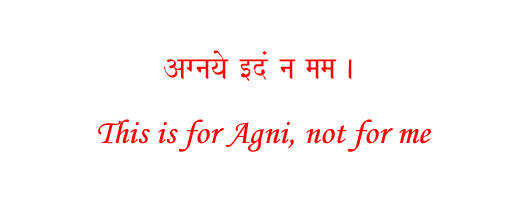
Posted on August 30, 2024 by admin
The Vedas are perhaps the oldest written text on our planet today. They date back to the beginning of Indian civilization and are the earliest literary records of the whole Aryan race. They are supposed to have been passed through oral tradition for over 10,000 years. They came to us in written form between 4-6,000 years ago.
The word ‘Veda’ is evolved from the element ‘Vid’ which means ‘knowing’. One can absorb the knowledge only by knowing it properly. In other words one can say, knowing is synonymous to the word knowledge. Basically the meaning of the Veda is knowledge.
Vedas are also known as ‘Shruti’ the word ‘Shruti’is evolved from the element ‘Shru’ which means ‘hearing’. It is said that the Gods dictated the Vedas and the Sages ‘heard them’ and wrote them.
There are 4 Vedas – Rgveda, Yajurveda, Samveda and Atharvaveda.
RGVEDA
Rgveda means the Veda of Adoration and mostly contains verses adoring or adulating deities. But it also dealt with other subjects, like the procedure of wedding, the folly of gambling. About two-thirds of Rgveda is about the gods Agni (Fire) and Indra (Ruler of the gods). Other Rgvedic gods include Rudra, the two Ashvins,Savitar and Surya, Varuna, the Maruts and the Ribhus. There are references to a divine creeper, the Soma, whose juice was an energizer. Some animals like horses, some rivers, and even some implements (like mortar and pestle) were deified. Rgveda contains a sense of intimate communion between Nature and the Rishis or visionaries.
According to some, the concerns of Rgveda are those of simple, nomadic, pastoral Aryans. According to others, the people in the times of the Rgveda had a settled home, definite mode of life, developed social customs, political organizations, and even arts and amusements. Rgveda is the oldest, largest and most important of the Vedas, containing 10thousand verses forming 1017 poems in 20 groups.
YAJURVEDA
Yajurveda is the Veda of yajana or worship. It refers to acts of worship such as oblations made into Agni or Fire. It has two branches, Krishna or Black and Shukla or White. While both contain mantras or incantations to be chanted at rituals, Black Yajurveda also has many explanations. The recensions of Black Yajurveda are Taittirya, Katthaka, Maitrayani and Kapishtthala. Those of White Yajurveda are Madhyanadina and Kanva. The literary value of Yajurveda is mostly for its prose, which consists of short terse sentences full of meaning and cadence.
SAMVEDA
Samveda consists of a selection of poetry mainly from the Rgveda, and some original matter. It has two parts, Purva-Archika (First Adoratona) and Uttar-Archika (Later Adoration), containing verses addressed to the three gods Agni (Fire), Indra (King of Gods) and Soma (Energizing Herb). The verses are not to be chanted anyhow, but to be sung in specifically indicated melodies using the seven svaras or notes. Such songs are called Samagana and in this sense Samveda is really a book of hymns.
ATHARVAVEDA
Atharvaveda means the Veda of the Wise and the Old. It is associated with the name of the ancient poet Atharvan (The Wise Old One). It is also called Atharva-Angirasa, being associated with the name of another rishi, Angiras. Although later in age, the Atharvaveda reveals a more primitive culture than the Rgveda. The custom is to enumerate Yajurveda and Samveda after the Rgveda, and mention Atharvaveda last. Atharvaveda contains about 6 thousand verses forming 731 poems and a small portion in prose. About one seventh of the Atharvaveda text is common to the Rgveda.